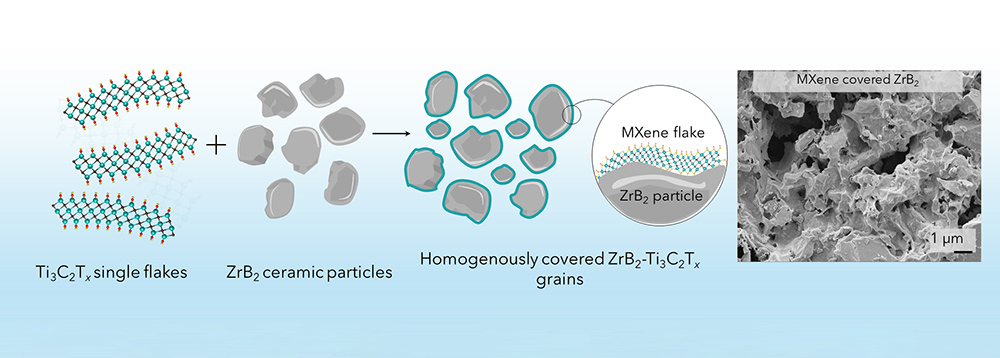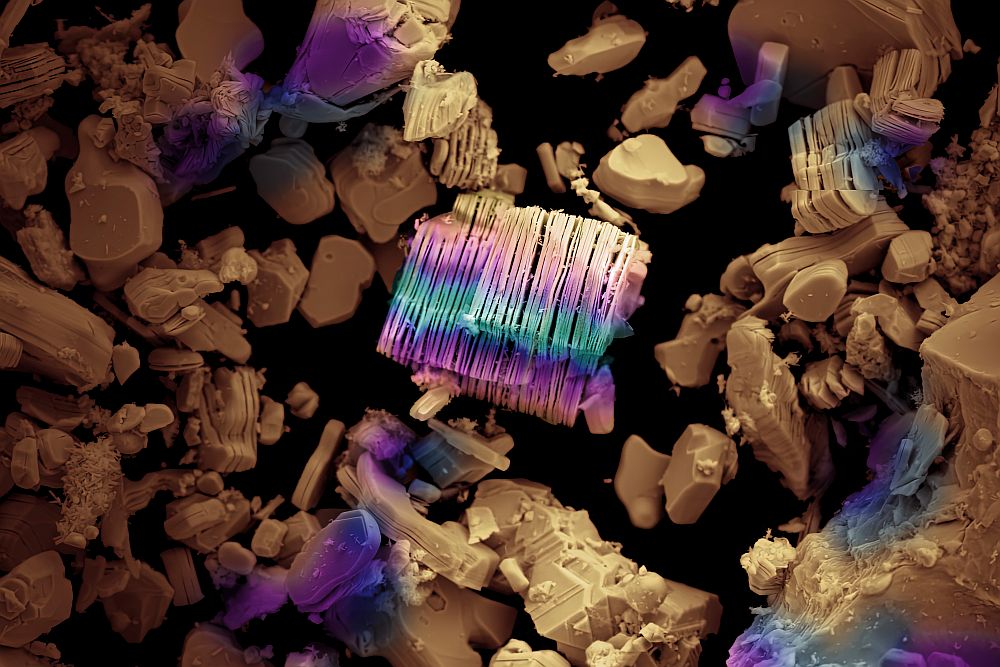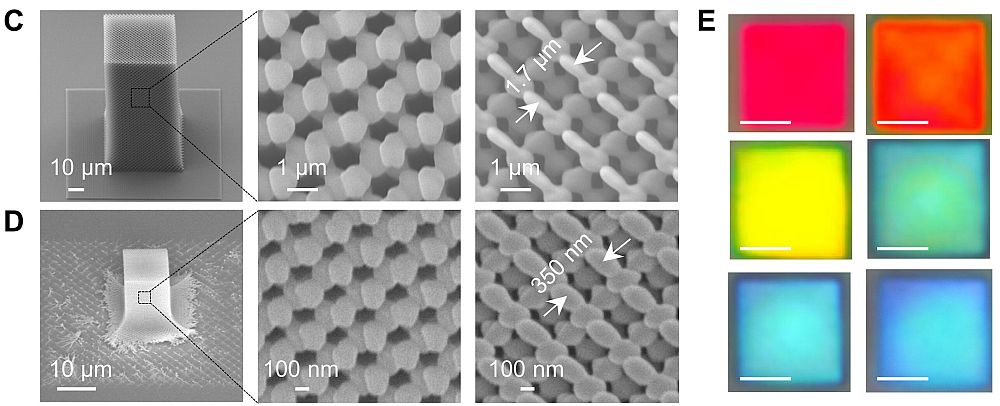
[Image above] Schematic of the MXene-enhanced ultrahigh-temperature ceramics synthesis process alongside a scanning electron microscopy image of 2.5 wt.% MXene-enhanced zirconium diboride green bodies. Ceramic slurries of zirconium diboride were added to the MXene suspension with continuous stirring. The MXene flakes then coated the zirconium diboride particles via an electrostatic self-assembly process. Credit: Nemani et al., Advanced Science (CC BY 4.0)
The 2010s were, without a doubt, a decade of acceleration. Continued rising concentrations of greenhouse gases fueled record land and ocean temperatures and contributed to the acceleration of ice melt and sea level rise.
The 2020s will need to be a decade of solutions if we are to avoid the projected worst-case scenarios and adapt to the changes already here. These solutions should not only include adopting alternative fuel sources with lower emissions but also finding ways to use fossil fuels more efficiently.
Operating devices at higher temperatures is one way to significantly enhance fuel efficiency in advanced aerospace, energy, and thermal systems. But this solution requires materials that can withstand the increased atmospheric stresses, such as larger thermal gradients and accelerated oxidation mechanisms, that occur at these higher temperatures.
Ultrahigh-temperature ceramics (UHTCs) can enable advanced systems to withstand these stresses while maintaining functionality. This class of materials is comprised of borides, carbides, and nitrides of transition metals with very high melting points, generally above 2,000°C.
UHTCs have been a subject of extensive research since the 1960s, and some of these materials now have established industrial uses. However, the use of UHTC borides and carbides with melting points above 3,000°C for aerospace applications—such as leading edges and nose caps in hypersonic aircraft—remains a nascent field of research.
One of the challenges with using UHTCs in the aerospace sector is the fact that, like other ceramics, UHTCs can suffer from intrinsic brittleness. Thus, manufacturers need ways to improve the strength and fracture toughness of UHTCs.
MXenes are one promising solution to improve the mechanical properties of UHTCs. MXenes are a family of 2D early transition metal carbides and nitrides with a wide degree of tunability in their chemistry. This tunability has enabled MXenes to be applied in areas ranging from energy storage and conversion to flexible optoelectronics to wearable biosensors.
MXenes have the potential to be used as additives in traditional UHTC materials or even as standalone materials in extreme environments. So far only fundamental studies on this potential application have taken place, but the promising solution processibility and scalable synthesis of MXenes “only further serves to beckon future ceramicists to develop these materials for extreme operating conditions,” researchers write in the “Industry Perspectives” column of the April 2025 Bulletin.
The authors of that column were Babak Anasori, Reilly Rising Star associate professor of materials engineering and mechanical engineering, and postdoctoral researcher Brian Wyatt of Purdue University. In a recent open-access paper, they and colleagues at Purdue University and Colorado School of Mines moved beyond fundamental investigations and created the first MXene-enhanced UHTC for experimental testing.
For this first experimental study, the researchers chose zirconium diboride as the model system. Zirconium diboride offers the benefits of high melting point (>3,200°C) and high strength at elevated temperatures (up to 800 MPa at 1,600°C), but it suffers from inherent brittleness, poor sinterability, and is prone to oxidation.
To create the MXene-enhanced UHTC, the researchers developed a self-assembly-driven green body synthesis method to conformally cover the zirconium diboride grains with titanium carbide MXene (Ti3C2Tx). The method uses electrostatic interactions in aqueous solutions to achieve the conditions necessary for successful self-assembly.
Analysis of the MXene-enhanced zirconium diboride samples showed that even just a small addition of MXene into the UHTC, as low as just 0.5 wt.%, improved densification from about 88% in pure zirconium diboride to about 96% for the encapsulated grains after spark plasma sintering.
Furthermore, the zirconium diboride’s mechanical properties improved substantially after encapsulation, including a 36% increase in hardness, an about 12% enhancement in Young’s modulus, and an about 15% increase in flexural strength at 2.5 wt.% MXene loading.
Based on these results, the researchers drew two key conclusions:
- The MXene-enhanced UHTCs produced using this process demonstrate enhanced mechanical properties and strengthening mechanisms, which should facilitate their use in high-temperature aerospace and energy applications.
- Because the new self-assembly process does not require any surfactants or stabilizing agents, it should be applicable to other MXenes and UHTCs.
“Our findings mark a key step in bridging fundamental studies with practical applications, demonstrating MXenes’ real potential in UHTCs,” says lead author Kartik Nemani, post-doctoral research fellow at the University of Alabama at Birmingham, in an email.
The open-access paper, published in Advanced Science, is “Ti3C2Tx MXene–zirconium diboride based ultra-high temperature ceramics” (DOI: 10.1002/advs.202500487).
Author
Lisa McDonald
CTT Categories
- Material Innovations
- Nanomaterials


